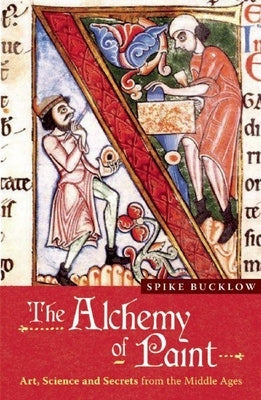Description
The Alchemy of Paint is a critique of the modern world, which Spike Bucklow sees as the product of seventeenth-century ideas about science. In modern times, we have divorced color from its origins, using it for commercial advantage. Spike Bucklow shows us how in medieval times, color had mystical significance far beyond the enjoyment of shade and hue.
Each chapter demonstrates the mindset of medieval Europe and is devoted to just one color, acknowledging its connections with life in the pre-modern world. Colors examined and explained in detail include a midnight blue called ultramarine, an opaque red called vermilion, a multitude of colors made from metals, a transparent red called dragonsblood, and, finally, gold.
Today, "scarlet" describes a color, but it was originally a type of cloth. Henry VI's wardrobe accounts from 1438 to 1489 show that his cheapest scarlet was 14.2s.6d. and that scarlets could fetch up to twice that price. In the fifteenth century, a mid-priced scarlet cost more than two thousand kilos of cheese or one thousand liters of wine. This expense accounts for the custom of giving important visitors the red carpet treatment.
The book looks at how color was "read" in the Middle Ages and returns to materials to look at the hidden meaning of the artists' version of the philosopher's stone. The penultimate chapter considers why everyone has always loved gold.
Spike Bucklow is a conservation scientist working with oil paintings at the Hamilton Kerr Institute in Cambridge.
Author: Spike Bucklow
Publisher: Marion Boyars Publishers
Published: 09/01/2009
Pages: 336
Binding Type: Paperback
Weight: 0.75lbs
Size: 8.40h x 5.20w x 1.10d
ISBN13: 9780714531724
ISBN10: 0714531723
BISAC Categories:
- Art | Techniques | Painting
About the Author
Spike Bucklow trained as a chemist. He worked in the film industry, creating puppets using prosthetics, including Ronald Reagan in Spitting Image and Jabba the Hut in Return of the Jedi. He became an art conservator, at the Hamilton Kerr Institute in Cambridge where he restores mediaeval art. He is an expert in craquelure, fixing the cracks in oil paintings.

